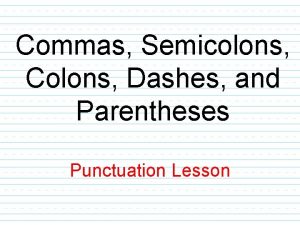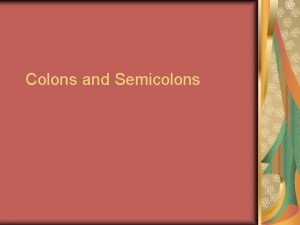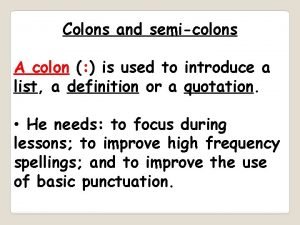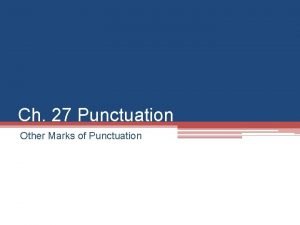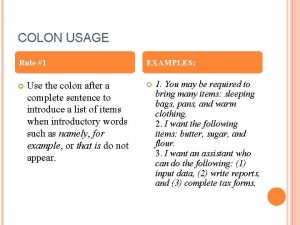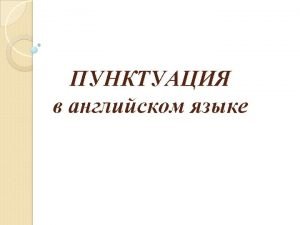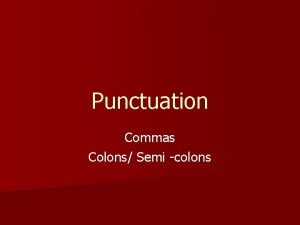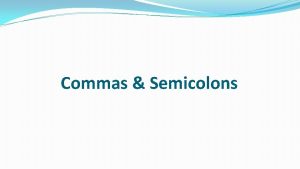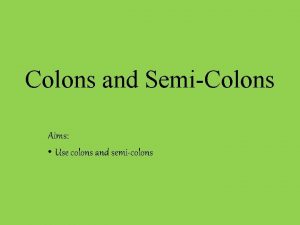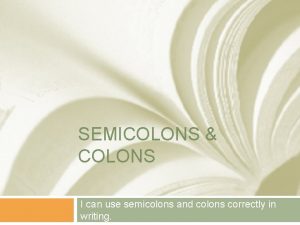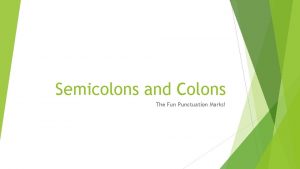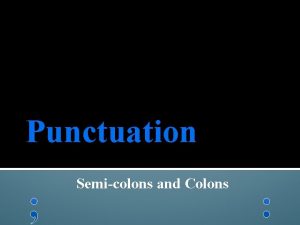Commas Colons and Semicolons PUNCTUATION RULES Comma Rules








- Slides: 8

Commas, Colons, and Semicolons PUNCTUATION RULES

Comma Rules: Separate items in a series Ex. The dishes, pots, and pans need to be washed Separate two or more adjectives Ex. John is a humble, innocent child. Before for, and, nor, but, or, yet, so when they separate independent clauses. Ex. We could read the book, or we could wait to see the movie.

Comma Rules: To set off nonessential clauses Ex. His sayings, stated simply and directly, express wisdom. After introductory elements Ex. No, I have not read that book. Looking calm, Jill walked to the podium To set off interruptions Ex. Your research paper, Dylan, is very interesting

Commas in Conventional Situations: To separate items in dates and addresses Ex. April 8, 2000 315 Wayne Court, Danuba, California After the salutation or closing of a letter Dear Alicia, Sincerely, To set off abbreviations such as Jr. , Sr. , RN, M. D. , Ltd. , or Inc. Jorge Rivera, Jr. Flowers by Algernon, Inc.

Semicolons: USE A SEMICOLON BETWEEN INDEPENDENT CLAUSES (TO BREAK UP A RUN-ON) YOU DON’T HAVE TO ALREADY SEPARATED (FANBOYS), UNLESS ALREADY CONTAIN A USE A SEMICOLON IF THE RUN-ON IS WITH A COMMA AND CONJUNCTION THE CLAUSES YOU ARE SEPARATING LOT OF COMMAS EX. THE RAIN HAD FINALLY STOPPED; A FEW RAYS OF SUNSHINE WERE PUSHING THROUGH THE CLOUDS.

Semicolons: • USE A SEMICOLON BETWEEN ITEMS IN A SERIES IF THE ITEMS CONTAIN COMMAS. EX. THE CHOIR BUS TOUR TRAVELED TO COLUMBIA, SC; ATLANTA, GA; AND GAINSVILLE, FL.

Colons: • USE A COLON BEFORE A LIST OR QUOTE TO MEAN “NOTE WHAT FOLLOWS. ” EX. THE EPICS WE WILL STUDY IN CLASS INCLUDE THE FOLLOWING: THE ILIAD, THE AENEAD, AND THE EPIC OF GILGAMESH.

Colons: • CONVENTIONAL SITUATIONS: -12: 01 A. M. (BETWEEN HOUR AND MINUTE) -MARK 3: 10 (BETWEEN CHAPTER AND VERSE) -A LONG WAY GONE: MEMOIRS OF A BOY SOLDIER (TITLE AND SUBTITLE) - TO WHOM IT MAY CONCERN: (AFTER THE SALUTATION OF A BUSINESS LETTER)
